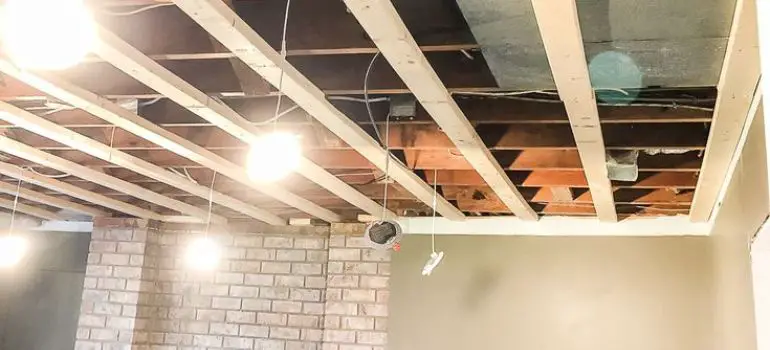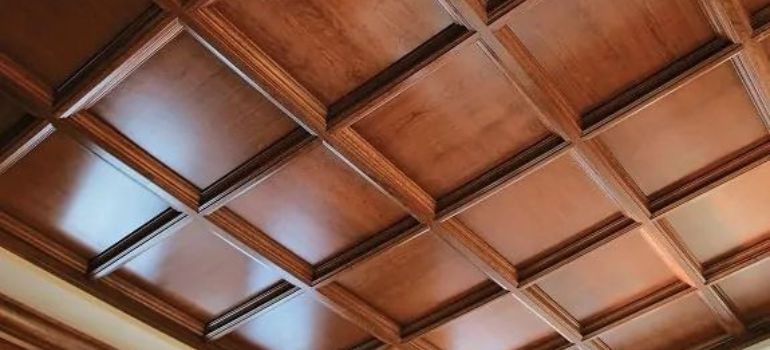What Are Furring Strips?
Furring strips, often made from wood or metal, are long, narrow strips used to create an air gap between a wall and the finishing material. This gap allows for insulation, ventilation, and the concealment of wires and pipes. Furring strips are typically attached horizontally or vertically to the wall’s framing, serving as a foundation for attaching the finishing material securely.
Factors Affecting Weight Capacity
The weight capacity of furring strips depends on several factors:
Material
Furring strips are available in various materials, each with its own unique characteristics and advantages. The choice of material depends on your specific project requirements and preferences. Here are the most common materials used for furring strips:
1. Wood Furring Strips:
Wood is a traditional and widely used material for furring strips. It offers several benefits:
- Availability: Wood furring strips are readily available at most lumberyards and home improvement stores, making them easily accessible for DIY projects.
- Affordability: Wood furring strips are generally cost-effective, making them an economical choice for many applications.
- Versatility: They are suitable for various projects, including framing walls, ceilings, and providing support for finishes like drywall or paneling.
- Ease of Installation: Wood furring strips are relatively easy to work with, making them a popular choice for DIY enthusiasts.
- Insulation: Wood furring strips create an air gap that allows for insulation, contributing to improved energy efficiency in your space.
Common wood types used for furring strips include pine, cedar, oak, and fir. The choice of wood species can impact factors such as strength, appearance, and resistance to moisture.
2. Metal Furring Strips:
Metal furring strips, often made from steel or aluminum, offer unique advantages:
- Strength: Metal furring strips are known for their high load-bearing capacity. They can support more significant weights compared to wood, which makes them suitable for projects with heavy finishes or equipment.
- Durability: Metal furring strips are resistant to moisture, pests, and rot, making them an excellent choice for environments where wood may be vulnerable to damage.
- Uniformity: Metal furring strips are typically manufactured with consistent dimensions, ensuring uniform spacing and support.
- Fire Resistance: Steel furring strips provide a level of fire resistance, making them suitable for applications where fire safety is a concern.
While metal furring strips offer exceptional strength and durability, they may be relatively more expensive than wood, and their installation may require specialized tools and skills.
3. Other Materials:
In addition to wood and metal, some projects may require alternative materials for furring strips, depending on specific needs. These materials can include:
- Plastic: Plastic furring strips are lightweight and resistant to moisture, making them suitable for outdoor applications and areas prone to moisture exposure.
- Composite: Composite furring strips combine materials like wood fibers and plastic to provide a balance between strength and resistance to environmental factors.
Size and Spacing

The size and spacing of furring strips are critical considerations when planning your construction or renovation project. These factors play a significant role in determining the strength, stability, and effectiveness of your furring strip installation. Here’s why size and spacing matter:
1. Size of Furring Strips:
The size of furring strips refers to their width and thickness. Choosing the appropriate size is essential for several reasons:
- Load-Bearing Capacity: Thicker and wider furring strips generally have a higher load-bearing capacity. If your project involves supporting heavy finishes or equipment, using larger furring strips can provide the necessary strength.
- Stability: Larger furring strips offer increased stability and resistance to bending or warping. This is particularly important if your project requires straight and level surfaces for finishes like drywall or paneling.
- Spacing Considerations: The size of your furring strips may also influence the spacing between them. Larger strips may allow for wider spacing while still maintaining sufficient support.
- Insulation and Ventilation: The size of furring strips can affect the size of the cavity or air gap between the strips and the wall. This space is essential for insulation, ventilation, and concealing wires and pipes.
2. Spacing Between Furring Strips:
The spacing between furring strips refers to the distance between each strip when they are attached to the wall or ceiling. Proper spacing is crucial for several reasons:
- Load Distribution: The spacing between furring strips affects how weight is distributed across the surface. Closer spacing provides more support and helps evenly distribute the load.
- Attachment Points: The spacing of furring strips should align with the attachment points of the finish material. For example, if you are installing drywall or paneling, the spacing should match the dimensions of the sheets to ensure secure attachment.
- Insulation and Ventilation: Proper spacing allows for the installation of insulation between the furring strips and promotes ventilation, which can prevent moisture buildup and maintain a comfortable indoor environment.
- Aesthetic Considerations: Spacing can also impact the visual appearance of your finished project. Evenly spaced furring strips can create a clean and uniform look for wall or ceiling finishes.
Attachment Method
The way you attach furring strips to the wall also impacts their weight capacity. Using appropriate fasteners, like screws or nails, and ensuring a secure connection is essential. Improper attachment can weaken the strips and reduce their ability to hold weight.
Wall Strength
The strength of the existing wall structure is a critical factor. If the wall is weak or damaged, it may not support heavy loads, even with robust furring strips. Reinforcing the wall may be necessary in such cases.
Calculating Weight Capacity
When working with furring strips, it’s crucial to have a good understanding of their weight-bearing capabilities. This knowledge helps ensure the safety and stability of your construction or renovation project. To calculate the weight capacity of furring strips, you can follow these steps:
1. Determine the Material Strength
The first factor to consider is the material of your furring strips. Common materials include wood (such as pine, cedar, or oak) and metal (typically steel or aluminum). Each material has its own load-bearing capacity.
- Wood: Wood furring strips are suitable for many applications and are available in various species and grades. To find the material strength, you’ll need to consult the manufacturer’s specifications or engineering tables. The strength of wood is often measured in pounds per square inch (PSI) or megapascals (MPa).
- Metal: Metal furring strips, particularly steel ones, are known for their high strength. You can find the material strength of steel by checking its grade and thickness. Steel’s strength is typically measured in pounds per square inch (PSI) or newtons per square millimeter (N/mm²).
2. Determine the Size and Spacing
The size and spacing of your furring strips also play a crucial role in their weight-bearing capacity:
- Size: Thicker and wider furring strips generally have higher load-bearing capabilities. Measure the width, thickness, and length of your furring strips to determine their size.
- Spacing: The distance between the furring strips matters. Closer spacing provides more support and can distribute weight more evenly. Measure the gap between each strip.
3. Use the Formula
Once you have gathered the necessary information, you can use this formula to calculate the weight capacity:
Weight Capacity = Material Strength x Strip Size x Spacing
For example, if you have wood furring strips with a material strength of 800 PSI, a width of 1 inch, a thickness of 2 inches, and a spacing of 16 inches between each strip, the calculation would be:
Weight Capacity = 800 PSI x 1 inch x 2 inches x 16 inches = 25,600 pounds
This calculation gives you the maximum weight that your furring strips can support over a given area.
4. Refer to Manufacturer Guidelines
It’s essential to note that actual weight capacity may vary depending on the specific product and manufacturer. Therefore, always refer to the manufacturer’s guidelines and recommendations for accurate load-bearing information.
5. Seek Professional Advice
In complex projects or situations where significant loads are involved, it’s advisable to consult a structural engineer or contractor. They can assess your specific needs and provide expert guidance to ensure the safety and stability of your project.
Recommended Weight Limits
Understanding the weight limits of furring strips is crucial to ensure the safety and stability of your construction or renovation project. While the weight capacity can vary depending on factors like material, size, and spacing, here are some general recommended weight limits for different types of furring strips:
1. Wood Furring Strips:
- 1×2 Wood Furring Strips: These are typically 1 inch wide by 2 inches thick. They can support approximately 10 to 15 pounds per linear foot. For example, a 6-foot-long strip can hold around 60 to 90 pounds.
- 1×3 Wood Furring Strips: These are slightly wider at 1 inch by 3 inches. They have a higher weight capacity and can support approximately 15 to 20 pounds per linear foot. A 6-foot-long strip can handle about 90 to 120 pounds.
It’s important to note that these weight limits are approximate and can vary based on factors like the type of wood used, the quality of the wood, and the spacing between the strips. Always refer to the manufacturer’s specifications for precise information.
2. Metal Furring Strips:
- Steel Furring Strips: Metal furring strips, particularly those made of steel, have higher load-bearing capacities compared to wood. They can often support up to 50 pounds or more per linear foot, depending on their size, thickness, and spacing.
Metal furring strips are known for their durability and strength, making them suitable for projects that require heavy load support.
Tips for Maximizing Furring Strip Strength
To ensure your furring strips hold the desired weight effectively, consider these tips:
- Use the appropriate material and size based on your project’s needs.
- Ensure proper spacing and attachment for even weight distribution.
- Check the condition of the wall before installation and repair any damage.
- If you’re unsure about weight requirements, consult a structural engineer or contractor for guidance.
When to Consult a Professional
In complex projects or situations where heavy loads are involved, it’s advisable to consult a professional engineer or contractor. They can assess your specific needs and provide recommendations to ensure the safety and stability of your project.
Conclusion
Furring strips are valuable components in construction and remodeling, but understanding their weight-bearing capacity is essential for a successful project. Factors such as material, size, spacing, and attachment method all contribute to their load-bearing capabilities. By following best practices and considering these factors, you can confidently use furring strips to enhance the functionality and aesthetics of your space.
FAQs
Yes, furring strips can be used for ceiling installations, but it’s crucial to ensure they are securely attached to the ceiling joists to support the weight of the finish material.
Metal furring strips are often preferred for their higher weight capacity and durability, but the choice depends on the specific requirements of your project.
While furring strips can support moderate weight, it’s recommended to use appropriate anchors or brackets when hanging heavy objects to avoid damaging the strips.
Yes, furring strips create an air gap that allows for insulation, improving energy efficiency in your space.
You can usually find manufacturer specifications on the product packaging or their official website. Be sure to check these for accurate information on weight capacities and usage guidelines.



